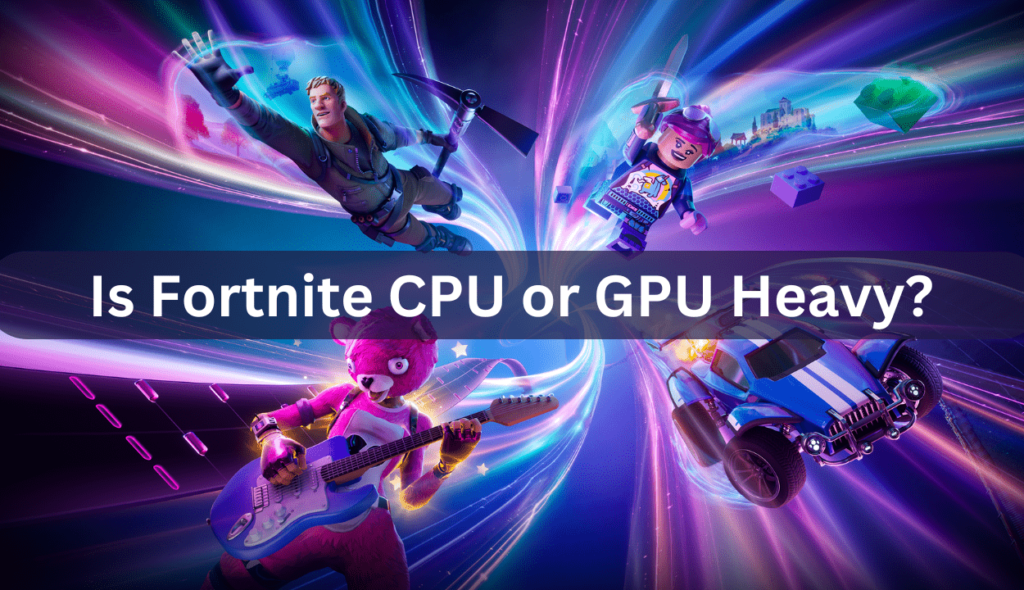
Dropping frames in Fortnite? Is Fortnite CPU or GPU heavy? Wondering what to upgrade first – CPU or GPU?
Fortnite is more GPU intensive than CPU intensive. Upgrading your GPU will have a more significant impact on visual quality and performance compared to upgrading your CPU.
Explore Fortnite’s hardware needs to prioritize your upgrades effectively. We’ll discuss benchmarks, recommend specs, and determine what matters most for victory. Get ready to dominate the Battle Royale!
Understanding Fortnite’s System Requirements
As you would expect from a graphically intense game like Fortnite, it requires a fairly powerful system to run smoothly. Fortnite can be played on Windows, macOS, PlayStation 4, Xbox One, Nintendo Switch, iOS, and Android, but the specific system requirements vary for each platform.
CPU
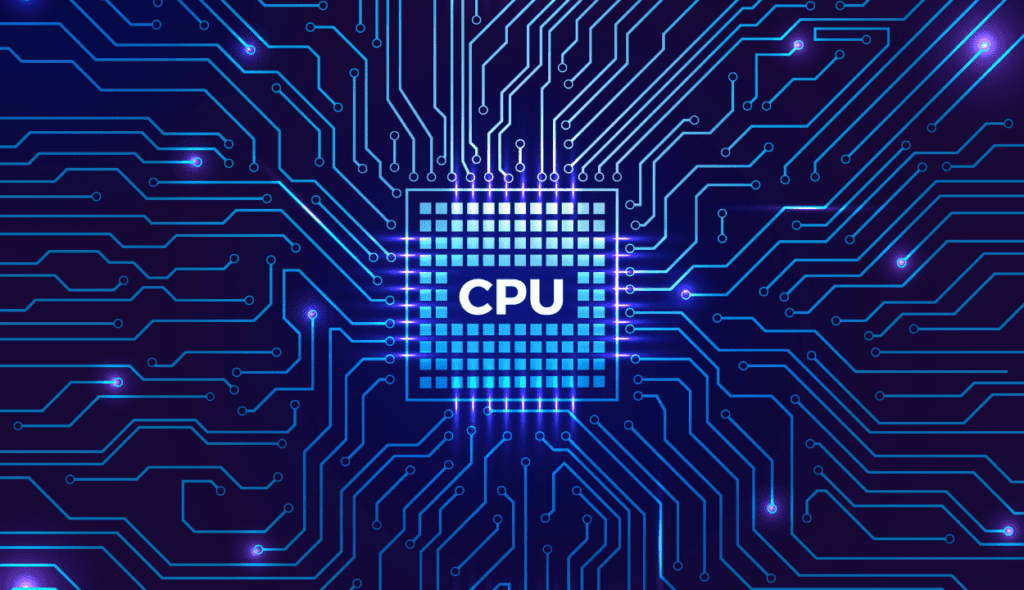
For PC, Fortnite requires at least a quad-core Intel Core i5 2.8GHz / AMD Phenom II X4 2.8GHz processor. The CPU, or central processing unit, is essentially the brain of your computer that handles tasks like physics calculations, controlling graphics, and more. A more powerful CPU with a higher clock speed will allow Fortnite to run better, especially when lots of action is happening on screen.
Graphics card
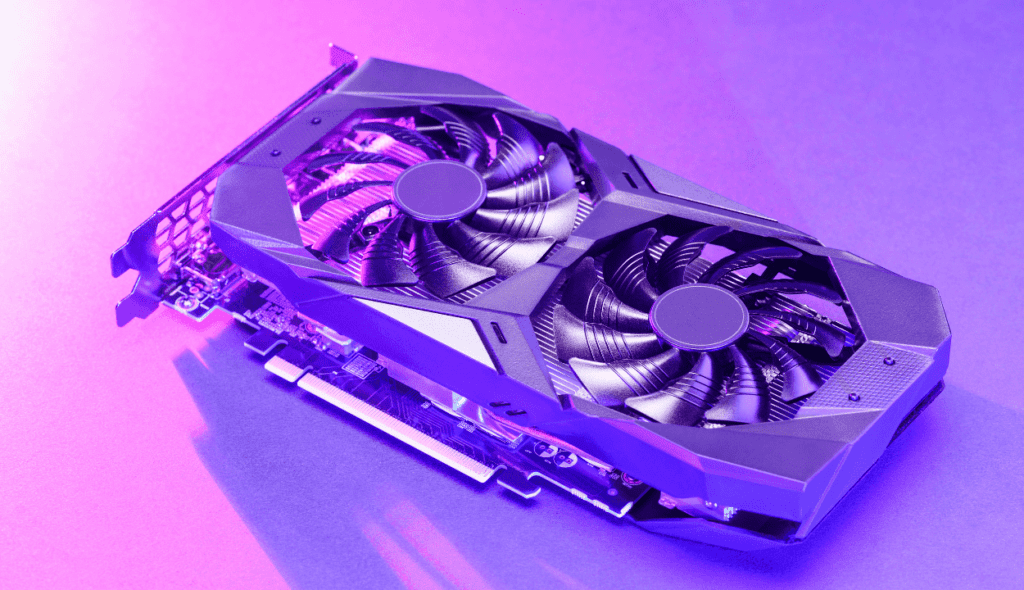
Fortnite needs a minimum NVIDIA GeForce GTX 660 / AMD Radeon HD 7870 graphics card with at least 2GB of video RAM. The graphics card renders all the visuals in the game and sends the output to your display. A more powerful card, especially one built for gaming, will allow you to run at higher resolutions and graphics settings with better performance.
Memory
You’ll want at least 8GB of RAM to run Fortnite smoothly. RAM, or random access memory, is used by the CPU and graphics card to temporarily store data needed to run the game. More RAM will allow your system to handle higher settings and resolutions.
Storage
Fortnite requires at least 20GB of free storage space. An SSD, or solid state drive, is recommended for faster loading times. The storage device is where the game itself and updates are installed.
- For the best experience on PC or console, aim for specs meeting or exceeding recommended requirements. Keep drivers and Windows updated for optimal performance. With the right balance of CPU, graphics, memory, and storage, you’ll enjoy smooth building and battling.
Benchmarking Fortnite’s CPU vs GPU Usage
Fortnite is a resource-intensive game that stresses both your CPU and GPU. To get the best performance, you’ll want to make sure you have a balanced system with a powerful graphics card and processor.
CPU Usage
Fortnite is CPU-heavy, especially in crowded areas like Tilted Towers. Your CPU handles tasks like physics calculations, audio processing, and keeping track of all the players and objects around you. If you have an older or lower-powered CPU, you may experience stuttering and frame rate drops in busy areas of the map. For the best Fortnite experience, aim for at least an Intel i5 or AMD Ryzen 5 CPU or better.
GPU Usage
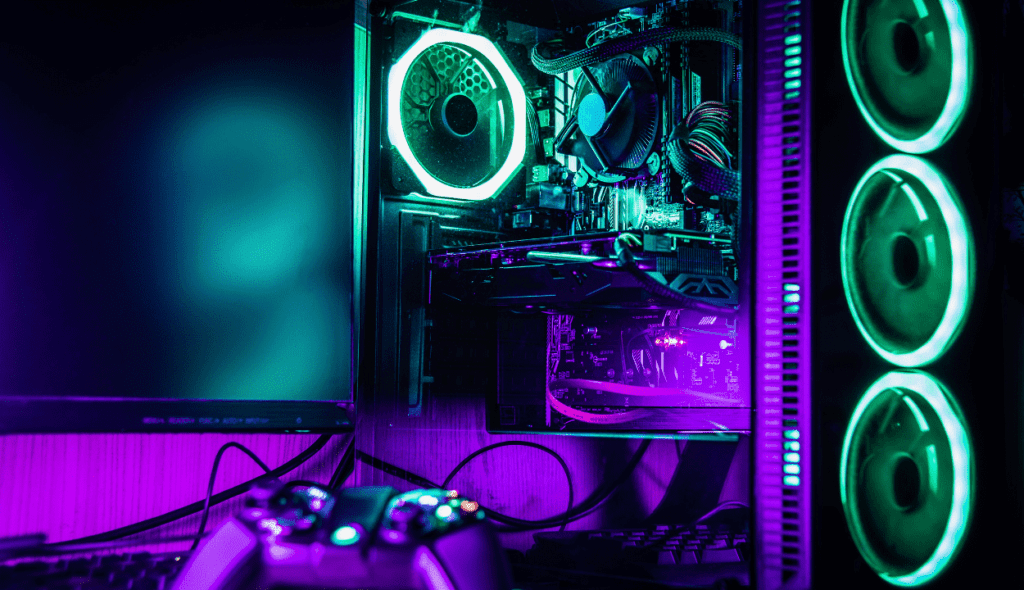
Your graphics card is also critical for running Fortnite smoothly. It’s responsible for rendering all the details in the environment, textures, lighting, shadows and more. Fortnite can put a lot of load on your GPU, especially if you play on high settings. For solid performance at 1080p, you’ll want at least an NVIDIA GTX 1060 or AMD Radeon RX 580 graphics card or better. Higher resolutions like 1440p or 4K will require an even more powerful GPU to maintain high frame rates.
Finding the Right Balance
For the best Fortnite experience, balance CPU and GPU power to avoid bottlenecks. Aim for at least an Intel i5 or AMD Ryzen 5 processor paired with an NVIDIA GTX 1060 or AMD Radeon RX 580 graphics card for smooth 60fps gameplay at medium to high settings. Upgrading to more powerful components allows for higher frame rates and better graphics.
- Use benchmarking tools like Cinebench for CPU and 3DMark for GPU to identify performance bottlenecks. Compare scores with similar systems to decide if a CPU or GPU upgrade is needed for optimal Fortnite settings. Achieve the best power balance for smooth gameplay.
Optimizing Fortnite Settings for Your PC
Fortnite can be demanding on your PC, depending on your system specs. To get the best performance, you’ll want to optimize your graphics settings based on whether your PC is more CPU or GPU dependent.
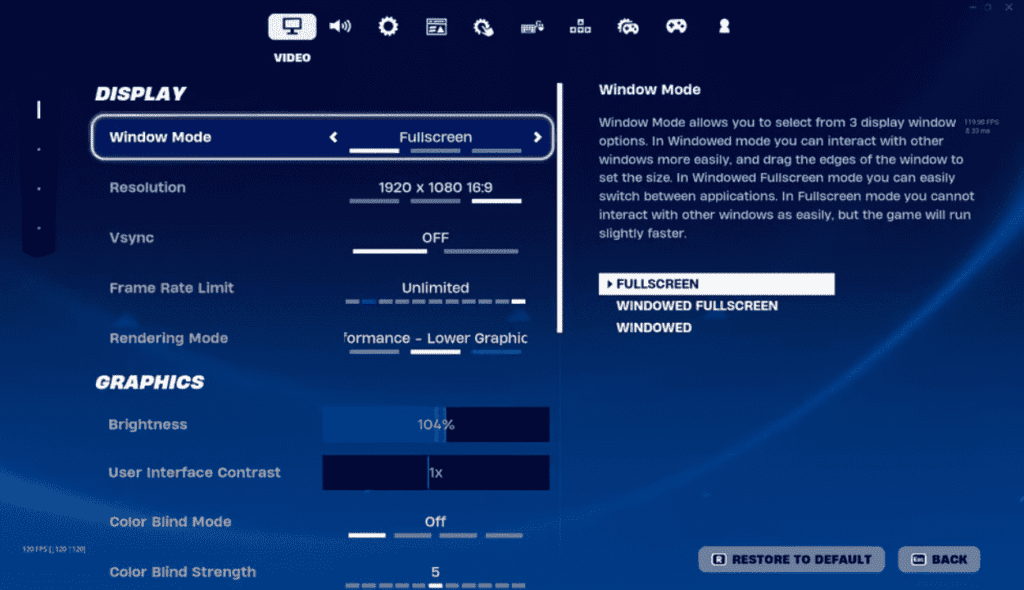
If Your CPU is the Bottleneck
If you have an older or lower-powered CPU like an Intel i3 or AMD FX series, you’ll want to turn down CPU-intensive settings. Lower the view distance, which controls how far away objects are rendered. Turn off shadows completely. Lower the effects quality and turn off post-processing. These reduce the load on your CPU.
If Your GPU is the Bottleneck
On the other hand, if you have a decent CPU but an entry-level graphics card like an NVIDIA GTX 1050 or AMD RX 560, focus on GPU-heavy settings. Turn down anti-aliasing, which smooths jagged edges. Lower the textures to Medium or Low. Turn off ambient occlusion, which controls how light bounces around a scene. These settings primarily impact your graphics card.
Finding the Right Balance
You might need to adjust both CPU and GPU settings for optimal performance. Begin with presets like Low, Medium, High, or Epic, then fine-tune individual options. Monitor FPS with in-game counters or tools like Fraps to spy on performance.
Aim for at least 30 to 60 FPS for smooth gameplay. Don’t be afraid to turn some settings all the way down, since visuals matter less than performance in a fast-paced game like Fortnite. With some experimentation, you’ll find the optimal configuration for your system.
- Remember, you can always upgrade your hardware down the road for even better performance. But with the right settings adjustments, even lower-end PCs can handle Fortnite and achieve victory royales. Keep at it and you’ll be building like a pro in no time!
Upgrading Your CPU or GPU for Fortnite?
When it comes to running a graphics-intensive game like Fortnite, your computer’s central processing unit (CPU) and graphics processing unit (GPU) really matter. If your gameplay is lagging, graphics look pixelated, or the game is crashing, it may be time for an upgrade. But which component should you focus on—CPU or GPU?
CPU
Your CPU handles all the computational tasks in your computer like running the game engine, physics calculations, and controlling the AI. For Fortnite, a mid-range CPU like an Intel i5 or AMD Ryzen 5 with at least four cores should work well for most players. If you’re running an older CPU, upgrading can significantly improve your frame rates and reduce lag, especially in busy areas of the map with lots of players and objects.
GPU
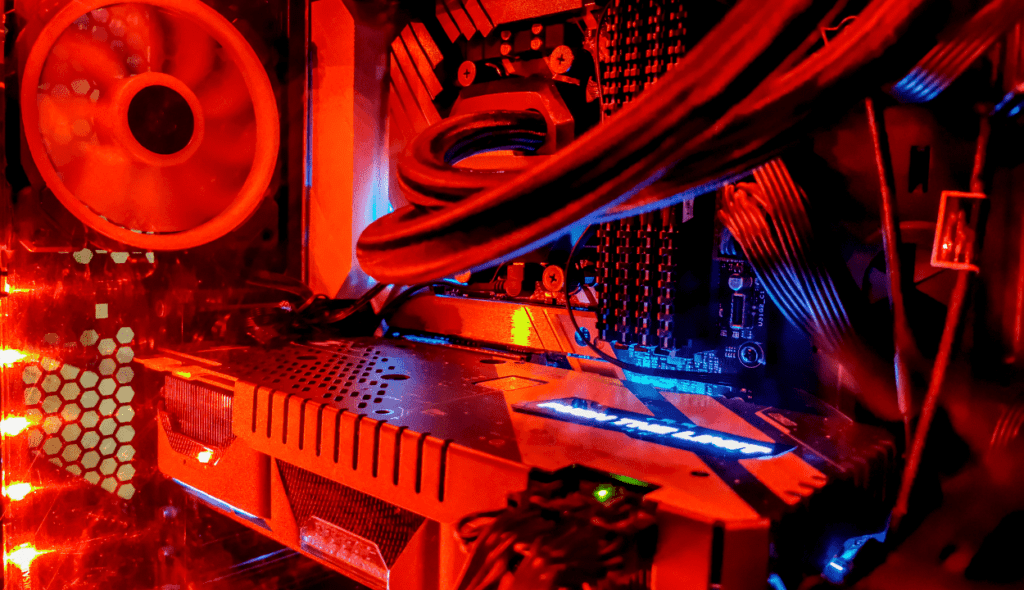
The GPU renders all the visuals in the game like characters, environments, and effects. For the best Fortnite experience, choose an NVIDIA GTX 1060 or better, or an AMD RX 580 or better. These graphics cards can handle high to ultra graphics settings at 60+ FPS in Full HD (1920×1080) resolution. If you play on a higher resolution monitor or want faster frame rates, consider upgrading to an even more powerful GPU.
- For smoother Fortnite, prioritize GPU upgrade for better visuals and performance. Upgrade CPU later if needed. Build and battle like a pro! With the right components, you’ll enhance your gaming experience quickly!
FAQs
What are the minimum system requirements to run Fortnite smoothly?
- To run Fortnite smoothly, you’ll need at least a quad-core Intel Core i5 2.8GHz / AMD Phenom II X4 2.8GHz processor for PC, a minimum NVIDIA GeForce GTX 660 / AMD Radeon HD 7870 graphics card with 2GB of video RAM, 8GB of RAM, and 20GB of free storage space.
Is Fortnite CPU or GPU heavy?
- Fortnite is more GPU intensive than CPU intensive. Upgrading your GPU will have a more significant impact on visual quality and performance compared to upgrading your CPU.
What are some recommended CPU and GPU specifications for playing Fortnite?
- For smooth gameplay, aim for at least an Intel i5 or AMD Ryzen 5 processor paired with an NVIDIA GTX 1060 or AMD Radeon RX 580 graphics card.
How can I optimize Fortnite settings based on my system’s specifications?
- If your CPU is the bottleneck, lower CPU-intensive settings like view distance, shadows, effects quality, and post-processing. If your GPU is the bottleneck, focus on GPU-heavy settings like anti-aliasing, textures, and ambient occlusion. Aim for a balance between the two for optimal performance.
Should I upgrade my CPU or GPU first for better Fortnite performance?
- Prioritize upgrading your GPU for better visuals and performance in Fortnite. If needed, consider upgrading your CPU later.
Conclusion
- So there you have it. While Fortnite utilizes both your CPU and GPU, most of the heavy lifting is done by the GPU. This is especially true at higher resolutions and graphics settings.
- Keeping your GPU drivers up-to-date and not running too many background tasks during gameplay can help maximize performance.
- Just be sure your machine meets the minimum requirements and you’re good to go.